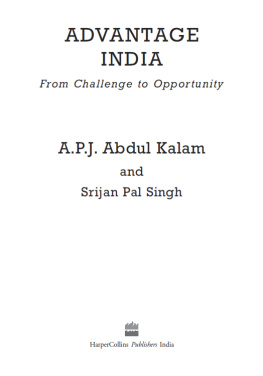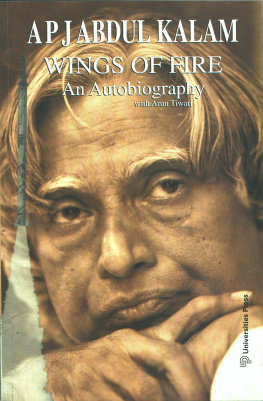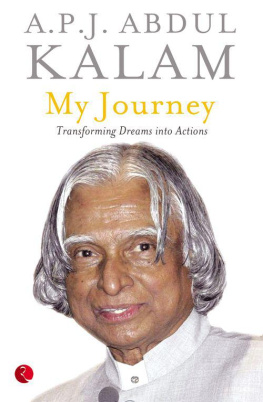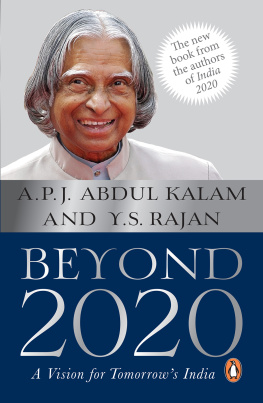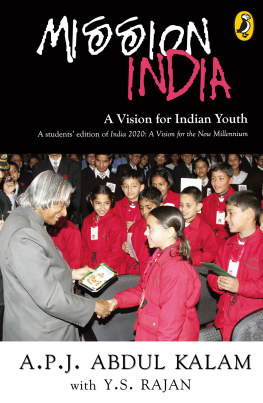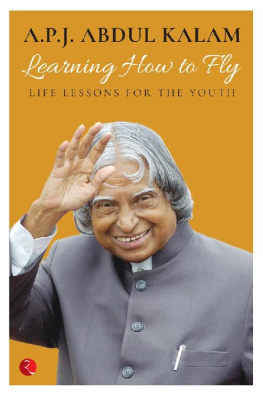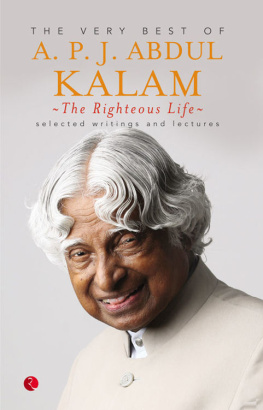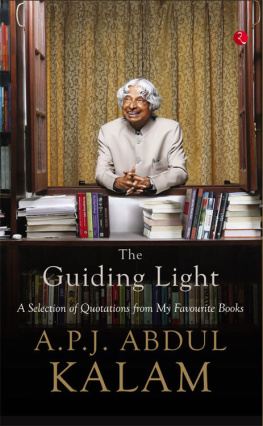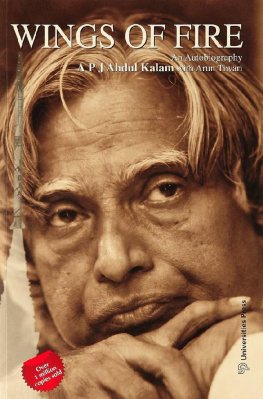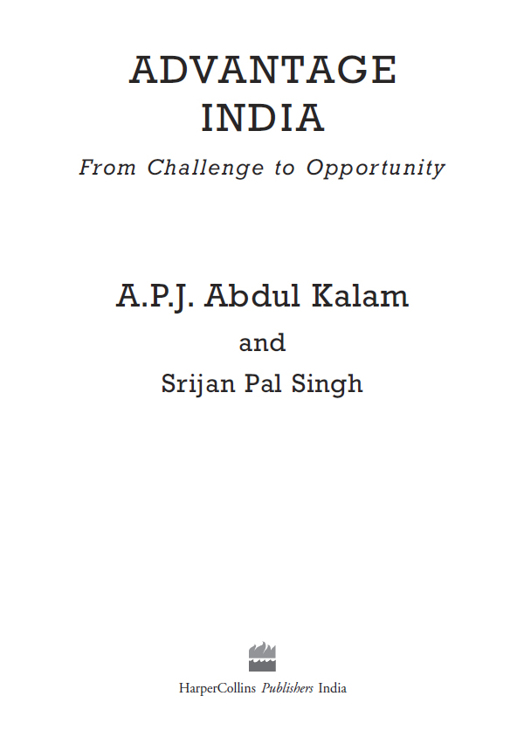In writing this book, our thoughts and ideas have evolved through two decades of experience and interaction with various stakeholders, including government functionaries, manufacturing industries, bureaucracy, environmentalists, social and spiritual leaders, educationists, healthcare institutes, many local business units and a general audience aspiring to contribute in their own ways to the nation and their families. A large portion of the thoughts expressed in this book are essentially extensions of contemplations, anxieties, dreams, perils, ambitions, hopes and challenges of all these citizens revolving around the fundamental need of the nation to identify and harness the advantages of India. We thank all these stakeholders, friends, acquaintances, some even strangers and the young community, who have openly shared their views and thoughts which have taken the shape of a coherent theory and examples in this book. We sincerely hope that our book captures their ingenious thoughts.
We also express our acknowledgement and gratitude to Shri Harry Sheridon, Shri R.K. Prasad and Shri Dhanshyam Sharma for their regular help towards putting this book together. We also extend our thanks to Shri G.R.K. Reddy, Mr G.S. Naveen Kumar, Professor Basav Roychoudhury (IIM Shillong), Mr Saurav and Mr Jayraj Pandya, who helped research and compile data for this book.
We also sincerely acknowledge the contribution of Mr Krishan Chopra of HarperCollins along with that of Ms Iti Khurana, Mr Sameer Mahale, Mr Siddhesh Inamdar, Mr Rajinder Ganju and Ms Bonita Vaz-Shimray for their excellent support in publishing this book in record time.
Location:
10 Rajaji Marg, New Delhi, a few months ago
Participants:
Dr A.P.J. Abdul Kalam: APJ
Srijan Pal Singh: SPS
Srijan: Good morning! As we begin to write this book today on creating an India with a competitive advantage, I am curious to know how you see this book. Where does this lead to?
APJ: It is not just a book. I think we are trying to make a blueprint for the nations development up to 2020. You see, the nation is going through a changeat an ever-increasing rate. We are trying to assess this change, find the points at which the people and the government need to intervene to help us achieve our aim of an economically developed India by 2020. And this has to be the mission of every Indian, wired into the conscience and work of every person no matter where, in schools, in colleges, in offices, in courtrooms and in Parliament.
SPS: Yes indeed. Let us make this book a personal mission for every Indian. A script of how individual actions, small steps, can be aggregated into a great journey. But I have a doubt. I wonder how is such an endeavour possible.
APJ: India is a vast nation with many different challenges. Moreover, the issues and opportunities of one region are different from that in another. A Bihar is very different from a Kerala or from a J&K. This makes single-agenda missions difficult. But then, I remember what my guru, Satish Dhawan, once said: If you undertake difficult missions, there will be many problems. Never let the problems become your captain. You become the captain of the problems, defeat them and succeed.
SPS: Indeed. In the past one year there has been many a significant shift in the nationbeginning with the change of government itself. Many state governments have also changed. New policies, goals and dreams are being pursued and there is a fresh urgency towards them. What are the changes you see and where is India heading?
APJ: I think there has been a realignment of energies for new missions while also continuation of existing missions. The nation has entered the last five years before it sees 2020, and there is an urgency to achieve the status of a developed India without poverty across the spectrum.
SPS: That is why we need to focus on a multi-pronged approach across many sectors concurrently. What do you think is our position in this respect?
APJ: Yes, we need to go into mission mode now. Set a target, and see who all, which all departments and initiatives can work together towards it. It would be good to make mission teams which can bring together system thinking, system design and system integration.
SPS: Let me get to some specific missions which are the pillars of development for India today and which we will be covering in this book. What do you think about the Make in India campaign? Many people are sceptical about it for a variety of reasons, including on grounds of attitude, education and infrastructure. You have led in the indigenous development of missiles, satellites and many other landmark projects. Do you see significant impediments to a large-scale mission of Make in India?
APJ: Well, let us be clear on this. Make in India is quite ambitious. But we need such high aspirations. India used to be a global hub of goods before the British destroyed the competency of our industries. So, I believe Indians have always had it in them to be global manufacturers. Education... yes we do need to look at the pyramid below the IITs and IIMsmuch needs to be done to make the workforce competitive. I agree with the infrastructure concern. India has seen an unbalanced infra growthvariations are rampant across states and sectors. For instance, while the telecom and internet sectors have made remarkable progress, many villages still are not connected with roads and power. Physical infrastructure cannot be ignored for manufacturing growth.
Also, we need to ensure that we do not become the low-cost, low-value assembly line of the world. If we go on that path, the growth will come at a great price and pain to the people. We have the ideas of the youth, the wisdom of the ages and the vibrancy of a democracy. With these three forces, we need to do original research to design, develop and manufacture in India.
SPS: Right. I get that. What about Digital India? There is a very promising plan to connect villages, schools and the base of the pyramid with digital connectivity. India has seen its service sector growth led by such an internet revolution in its cities.
APJ: Yes, Digital India has the potential to activate the knowledge connectivity needed in villages and remote areas. We need to bridge the gaps of lower level of literacy, language and customized content, though.
SPS: I think Digital India is a mission with tremendous potential for collateral benefits. Imagine a comprehensive data of all records that are interlinked to each other for all citizens. It would create a wonderful tool for data analysis, alerts and actions. It would also go a long way in addressing the issue of corruption. Speaking of corruption, what do you think is the solution to it? I have seen a lot of young people asking you this question.
APJ:

